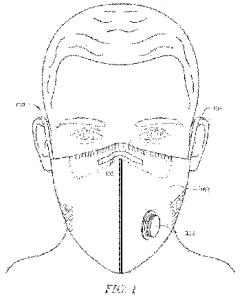IP and the spread of COVID-19 masks

An essential device to fight the spread of COVID-19, the mask now represents a retail market in its own right. Marine Dissoubray spells out the IP implications.
For many, wearing a face mask feels like a constraint, but the practice is likely to continue, even when the legal obligation has passed. For others, it has provided an opportunity to innovate and accessorise, with fashion giants such as Burberry launching branded washable monogrammed masks.
It is a potentially lucrative trend: The masks released by cult menswear brand Off-White, at the modest sum of €87, not only sold out quickly, but are now being resold online at three times the price.
But, whether or not your company hopes to jump on board, there are a number of IP rights that need to considered, whether you are a new market entrant or an established brand looking to diversify,
The trademark angle
For those setting up a mask business, an early step should be to protect the brand name under which you plan to sell masks, so as to distinguish yourself from the many competitors on the market. To obtain registration, care must be taken to choose a distinctive sign, that is available, in line with public order and morality, and which is not misleading for the consumer.
The obvious ‘COVID’ or ‘CORONAVIRUS’ should be avoided for reasons we have previously covered. In addition to being contrary to public order or morality, a refusal of registration could also eventually be based on a lack of distinctive character, because such signs could refer to a characteristic of the covered goods (masks to fight against the spread of the coronavirus).
Likewise, for the word ‘mask’. A quick search of trademark registries reveals the large number of recently registered trademarks that include this term, and applicants are advised to add one or more distinctive elements to their company or product names.
Finally, it is important to clearly determine the classes of products that will be targeted by the trademark filing. Today, we notice that applicants prefer to ‘aim wide’, covering: class 10 for surgical masks, 16 for certain paper masks, 24 for those who consider the mask as a piece of fabric, and/or 25 if it is perceived as a garment in its own right – the term ‘facewear’ being used more and more in the trade.
Many of these filings are still under review to this day. While waiting to see the trends emerge, we recommend targeting at least class 10 to cover the primary function of the mask, designating for example: ‘face masks for hygienic use’ or ‘hygienic masks for protection against germs’, as proposed by the Madrid Goods and Services Manager (MGS).
Design rights
As the functional mask gradually acquires an aesthetic dimension that ‘aesthetic appearance’ provides grounds for double protection: on the one hand, thanks to copyright, which will arise from the creation of the mask (provided that it is original); and, on the other, thanks to design rights, which will protect the external appearance of a mask (provided it is new and has its own character).
The EUIPO database reveals that a number of mask designs were deposited in 2020, generally in class 29.02 (Locarno Classification) which covers devices and equipment for the prevention of ‘accidents'. However, some of these designs may not meet the character requirement, which stipulates that the protected appearance must present an overall visual impression that is different from another such design.
For others, we note that the graphic representations provided do not allow a precise grasp of the object that the applicant seeks to protect; i.e. the mask or visor is difficult to identify in the photograph, or the contours of the mask are poorly defined, for example. This may make it difficult to assert rights for these designs.
It’s important to remember that the purpose of graphic representation is to reveal the characteristics of the design for which protection is requested. It is advisable, therefore, to use clear drawings or photographs on a neutral background, and without any element external to the mask itself.
Patent protection
 A mask, a visor or some of their constituent parts may also be eligible for patent protection. In order for a patent to be filed, however, the invention must be a new technical solution responding to a technical problem, resulting from an inventive step and capable of industrial application.
A mask, a visor or some of their constituent parts may also be eligible for patent protection. In order for a patent to be filed, however, the invention must be a new technical solution responding to a technical problem, resulting from an inventive step and capable of industrial application.
The pandemic has led to an outpouring of innovation with inventors competing to produce new processes or develop existing technologies, as we already covered in our article about the Easybreath diving mask.
Here again, a quick tour of the online databases makes it possible to see a number of registered patents, including complete masks (e.g. masks featuring a digital display) as well as components such as sealing elements or moisture absorption systems.
Even for those who would like these masks to go out of fashion quickly, one thing is for sure: the subject still has a bright future ahead when it comes to IP.
Marine Dissoubray is a Trademark and Design Attorney at Novagraaf in France.